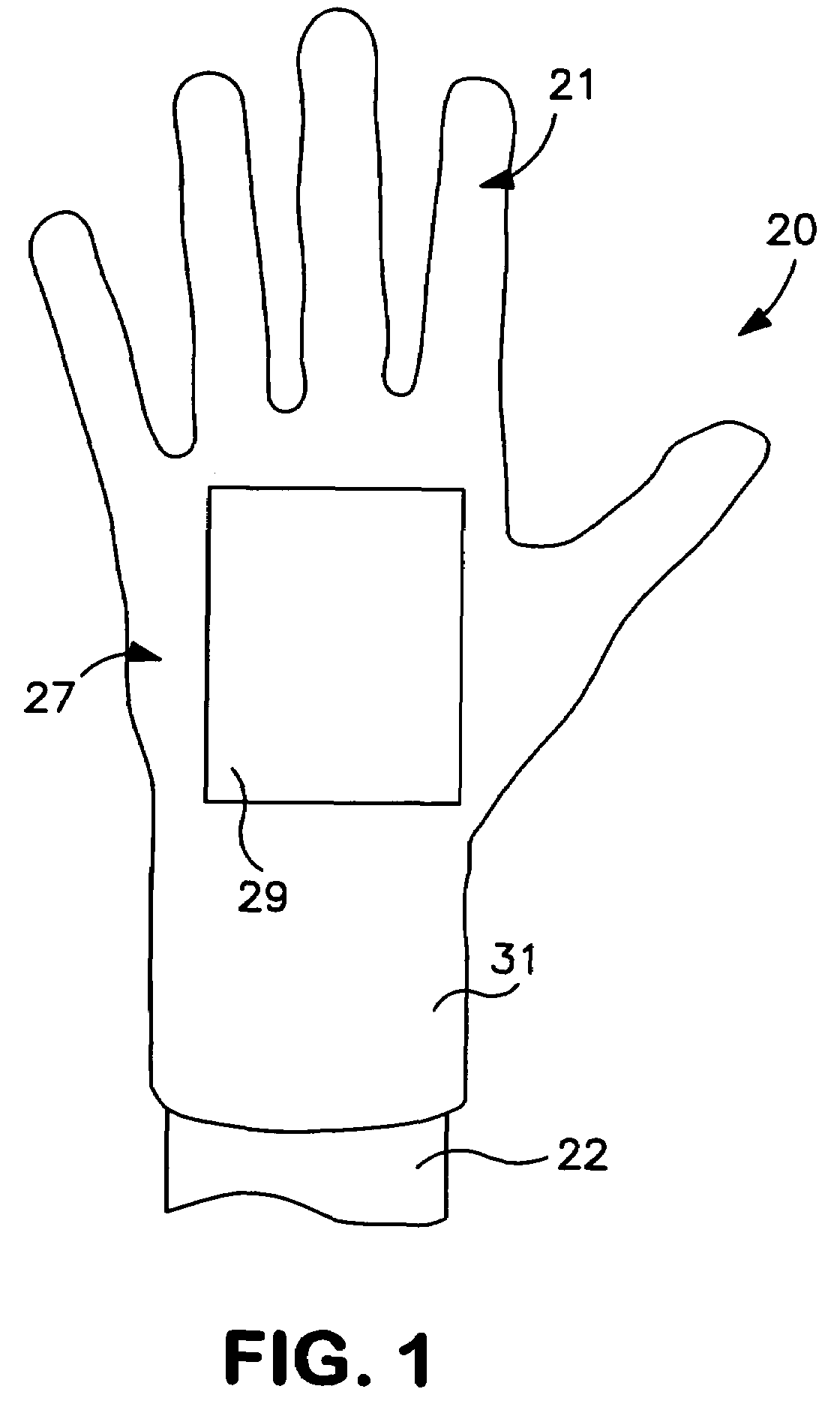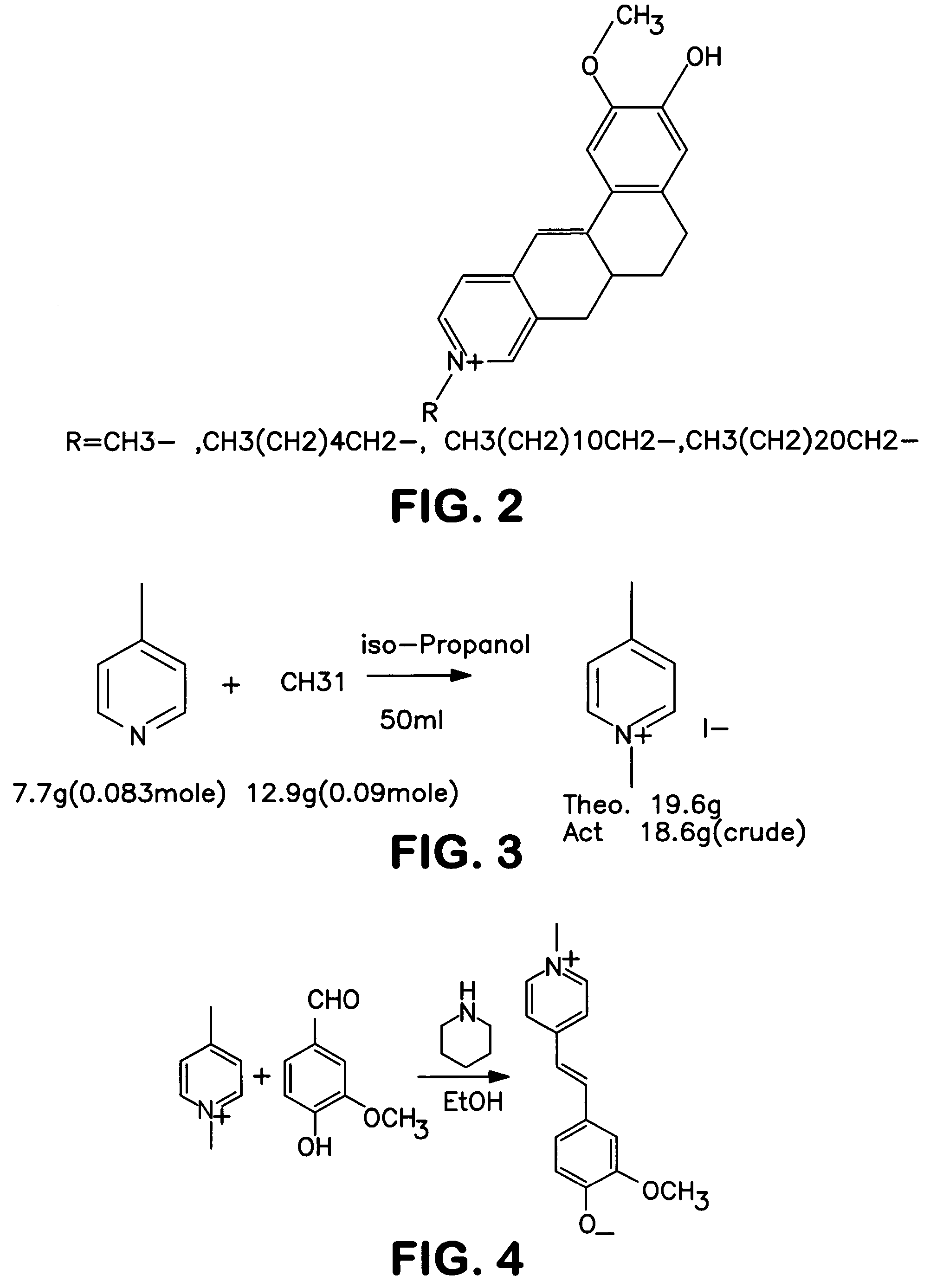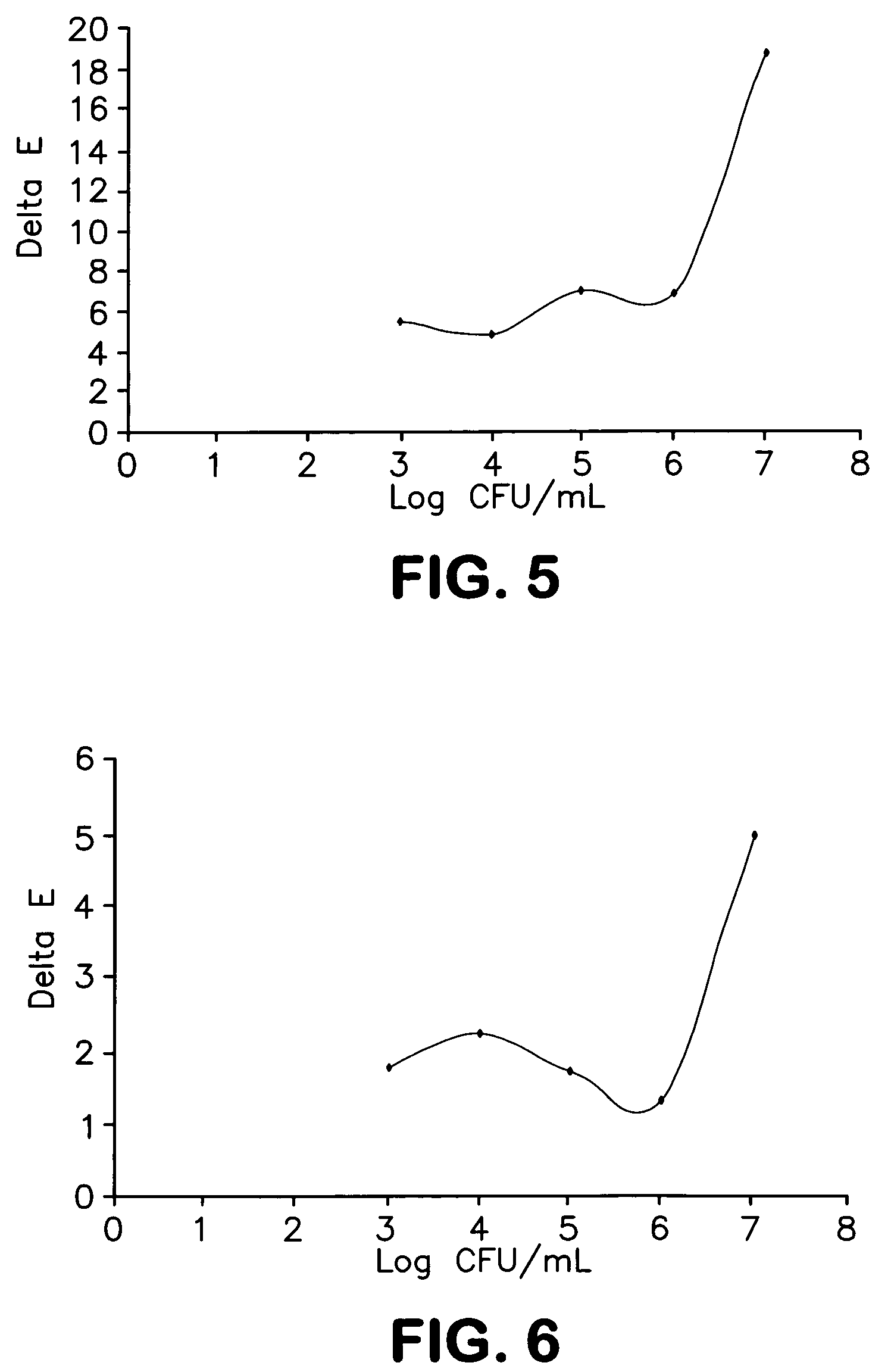Detection of microbe contamination on elastomeric articles
a technology of elastomeric articles and microorganisms, which is applied in the field of detection of microorganism contamination on elastomeric articles, can solve the problems of microbial contamination of elastomeric gloves worn by medical personnel, one or more portions of gloves may still be contaminated with microorganisms, and the problem of microbial contamination of elastomeric articles is problemati
- Summary
- Abstract
- Description
- Claims
- Application Information
AI Technical Summary
Benefits of technology
Problems solved by technology
Method used
Image
Examples
example 1
[0107]The ability to form merocyanine dyes for use in the present invention was demonstrated. For example, the merocyanine dye shown in FIG. 2 was synthesized in the laboratory using a two-step reaction. Specifically, as shown in FIG. 3, methyl iodide was added slowly to a stirred solution of δ-picoline in 50 milliliters of isopropanol in an ice bath. After addition was complete, the reaction was heated to reflux and reflux continued for 2 hours. The solution was then chilled in an ice-bath and the precipitate filtered, and washed with chilled alcohol, on a Buchner funnel. The powder was then dried in the fume-hood for 2 hours.
[0108]Yield of crude product was 18.6 grams. The crude product was not further purified and used directly for the next step. N-methyl-δ-Picolone (9.4 grams, 0.04 moles), and vanillin (6.1 grams, 0.04 moles) were all dissolved into 50 milliliters of ethanol with stirring as shown in FIG. 4. To this solution was added piperidine (3.4 grams, 0.04 mole) and the mi...
example 2
[0111]The ability to apply a chromogen to an elastomeric glove in accordance with the present invention was demonstrated. Specifically, a solution of Reichardt's dye (160 milligrams per 10 milliliters of acetonitrile) was brushed onto a piece of a natural rubber latex glove (commercially available from Kimberly-Clark Corp.). A 100-microliter drop of 107 CFU / mL S. aureus was then applied to the surface of the glove and gently spread using a disposable pipette. Thereafter, a finger of a second natural rubber latex glove (commercially available from Kimberly-Clark Corp.) was dipped into a solution of Reichardt's dye (160 milligrams per 10 milliliters of acetonitrile). After drying, the fingers of the second glove were used to spread bacteria from the S. aureus droplet placed onto the piece of latex glove to another area on the latex piece. The color of both the glove piece and the glove finger immediately changed. Similar results were also achieved for vinyl and nitrile gloves (commerc...
example 3
[0112]The ability to use isopropanol as a carrier for the chromogen was demonstrated. Plastic doorknobs were utilized as a “real world” surface on which to test bacterial contamination. A raw chicken leg was initially aged at room temperature for several days to ensure high bacterial levels (referred to hereinafter as “aged chicken”). Juice from the aged chicken was then used to mark the surface of one of the knobs. The other door knob was left uncontaminated as a control. Both knobs were wiped. Reichardt's dye was then dissolved in isopropanol (160 milligrams dye into 10 milliliters of isopropanol). The isopropanol solution of the dye was sprayed on both surfaces. The contaminated area of the doorknob was easily observed by its color change of the Reichardt's dye from blue to colorless.
PUM
| Property | Measurement | Unit |
|---|---|---|
| temperature | aaaaa | aaaaa |
| thickness | aaaaa | aaaaa |
| size | aaaaa | aaaaa |
Abstract
Description
Claims
Application Information
 Login to View More
Login to View More - R&D
- Intellectual Property
- Life Sciences
- Materials
- Tech Scout
- Unparalleled Data Quality
- Higher Quality Content
- 60% Fewer Hallucinations
Browse by: Latest US Patents, China's latest patents, Technical Efficacy Thesaurus, Application Domain, Technology Topic, Popular Technical Reports.
© 2025 PatSnap. All rights reserved.Legal|Privacy policy|Modern Slavery Act Transparency Statement|Sitemap|About US| Contact US: help@patsnap.com



